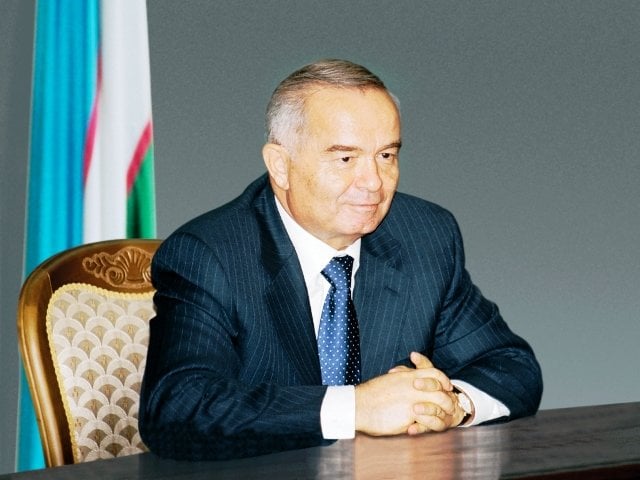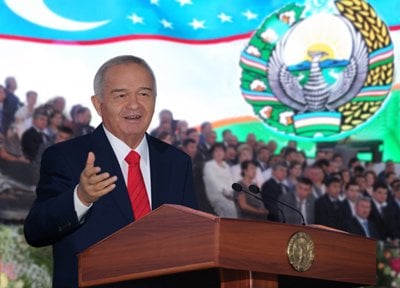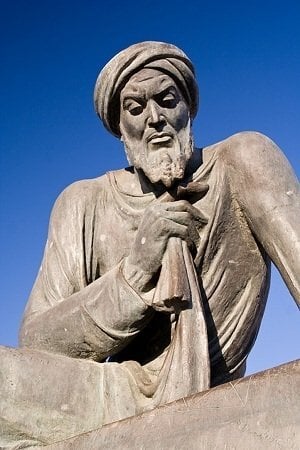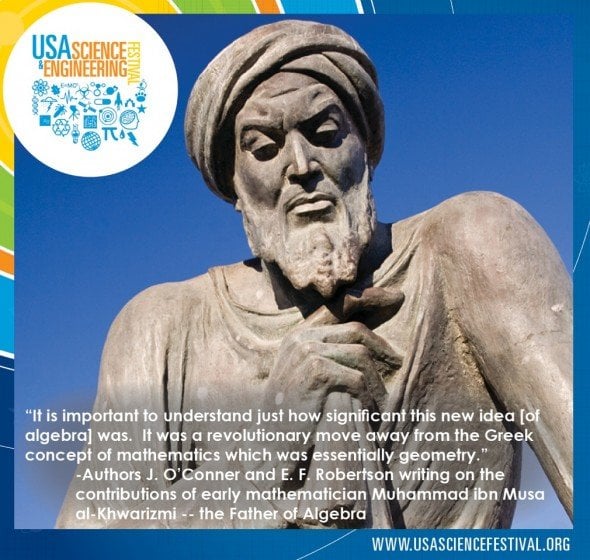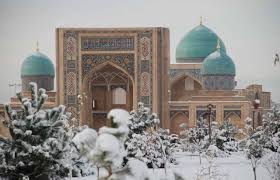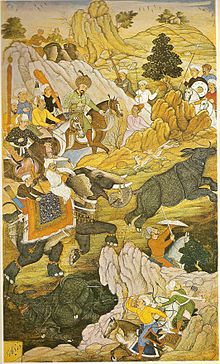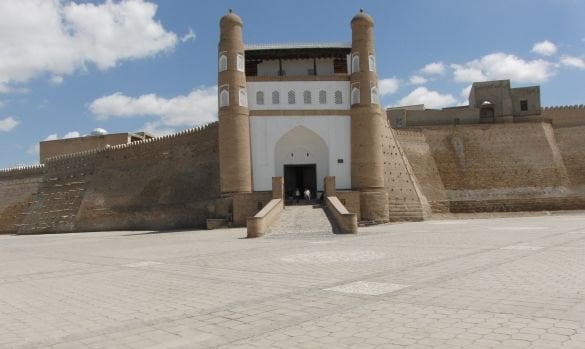There are few peoples in the world who wield such a rich heritage.
President of Uzbekistan Islam Karimov
Mehmood Ul Hassan Khan
The Republic of Uzbekistan the land of universal intellect and hub of human wisdom arranged an international academic conference “Historical Legacy of Scientists and Thinkers of the Mediaeval East, Its Role and Significance for the Modern Civilization” in Samarkand on 15-16 May 2014. It was held in accordance with the resolution of President Islam Karimov signed April 2014. It was attended by scholars from dozens of countries from around the world as well as representatives of prominent international organizations and research centers.
President Islam Karimov’s Commitments
Right from the beginning the government of the Uzbekistan under the supervision of its President Islam Karimov paid great attention to showcase its colossal spiritual heritage. International scientific and cultural cooperation has been launched in Uzbekistan. From time to time major academic conferences have been held to further these goals. Jubilees of outstanding scholars and thinkers as well as ancient cities have been celebrated at the international scale. Religious shrines have been glorified, restored and beautified. Special emphasis has been placed on the reinvigoration and perpetuation of the national spiritual legacy and the promotion of science and education.
Uzbekistan strategically located
Uzbekistan is strategically located at the crossroads of diverse civilizations on the Great Silk Road that links the East and West, it has been renowned from time immemorial for its great scientists and thinkers. They have made invaluable input into the evolution of the world civilization.
Uzbekistan the land of genuine thoughts
Uzbekistan the land of genuine thoughts and boundless genius of marvelous ancestors, the many thousands of works, the unique manuscripts in history, literature, arts, ethics, philosophy, medicine, mathematics, chemistry, astronomy, architecture and other areas constitute a priceless spiritual wealth of its people and the world at large.
Galaxies of Intellect, Wisdom and Scientific Research
Uzbekistan takes pride in its remarkable thinkers and scholars who delighted the whole world such as Muhammad Musa al-Khorezmi who was the first in the world to introduce decimal notation into science and the notions of algorithm and algebra, the encyclopedic scientists Ahmad al-Ferghani and Abu Rayhan Beruni, founder of the medical science Abu Ali ibn Sino, Mahmud Zamakhshari who created the perfect grammar of the Arabic language, the author of the astronomical table with the indication of movement of more than a thousand stars Mirzo Ulughbek and so forth. Infinite pride for our forefathers inspires us to live with a sense of high dignity and to be on the equal with others in terms of knowledge and abilities to be worthy descendants of these truly great people.
Samarkand: The Magic of East
Samarkand the symbol of the magic East, is one of the ancient cradles of the world civilization, a city with a rich historical and cultural heritage that housed hundreds of scholars and thinkers. The visitors were amazed with the architectural and cultural monuments suggestive of the genius of its ancestors, of the deep and great past. With its inimitable and picturesque nature, ancient and modern buildings and facilities, Samarkand charms to the end during the recently international conference.
Main Areas of Discussion
The participants thoroughly discussed and exchanged views and expertise on issues concerning the scientific, historical and philosophical heritage of the academics and thinkers of the medieval East, their immense contribution to the formation and development of astronomy, mathematics, geography, geodesy, medicine, pharmacology, chemistry, mineralogy and other sciences.
Show of Films
The conference included also a show of films narrating the life and creativity of scholars and thinkers of the medieval Orient, their historical legacy and the activities of academic schools. The event participants were briefed about the historical, academic and cultural monuments of Samarkand, the creative and beautification works carried out during the independence years, as well as the activities of education institutions.
Great Ancestors, Great Contributions
While using the mobile, remember, there is an Uzbekistan’s ancestor in the Mobile, said by an BBC documentary.
The great contribution of Uzbek ancestors to the development of world civilization is known to the whole world today. They are great scientists, philosophers, thinkers, religious leaders, commandors and rulers too. They influenced the world by their genuinely inbuilt qualities of knowledge, wisdom, observation, administration and message.
The following given scientists, philosophers, thinkers, religious leaders, commanders and rulers are the pioneers of so many disciplines of the today modern world which are not confined to natural science, pure science, medical science, biology, chemistry, physics, space science, travelogue, infrastructure engineering, governance and the last but not the least diplomacy.
The modern civilization is based on knowledge economy, corporate governance, dialogue, conflict resolution, respect for the international law, humanity and tolerance and Uzbekistan’s ancestors have been purified the minds and souls of so many unlimited generations and civilizations and infinite voyage goes on and on.
Muhammad Al-Khorazmi (780-863)
He was the greatest mathematician of ancient time, the founder of Algebra, the pioneer of algorithm and decimal system of numeration. On the basis of Al-Khorazmi’s algorithm a new science appeared – cybernetics, and it is impossible to develop other sciences without the cybernetics.
The accomplishments of Muhammad Al-Khorazmi in the development of mathematics and world ciliviation as a whole are generally recognized, and his name the only of the names of the orient became popularized as “algorithm” and his work was popularized as term “algebra”. Recognizing his genius, an American historian G. Sarton provided the most precise evaluation of his importance to the development of science, by stating that he was the greatest mathematician of his time, and if all the circumstances are taken account of he was probably the greatest mathematician of all time.
Akhmad Al-Farghoni (798-865)
He was the astronomer, mathematician and geographer. His works “The Principles of Astronomy” brought him fame throughout the world. He drew up a world map where he showed the continents and water basins and indicated azimuths. Now the map is being preserved in trhe state library of Genoa in Italy. Al-Farghoni proved by exact facts that the Earth has the form of a globe. In Cordoba (Spain), he organised a scientific center and laid the foundation for the University. He was known in the East by the name Alfraganus.
One of the Moon craters was named Alfraghanus after al-Farghani. The 1200th anniversary of his birthday was celebrated in 1998, under the auspices of UNESCO. Farghana State University was named after the widely recognized scientist. In 2007 during the official visit of the President of Uzbekistan to Egypt, Ahmed Al-Farghani’s monument was officially opened on the island of Rawda.
Imam Al-Bukhari (810-870)
He was the well-known scientist in the Islamic religion and theologian. His famous work is “Al-Jome as–Sakhikh” is reckoned the second holy book after the Koran in the Muslim world. He is the icon of religious research, history, heritage and culture. His shrine is still spreads the message of interfaith harmony, love towards humanity, and purity of souls.
Imam Abu Mansur Al-Moturidi (870-944)
He was the great thinker of the Muslim world, the founder of Islamic theology and the Maturidiya school of Sunni doctrine.
Abu Nasr Muhammad Al-Farabi (872-950)
He was philosopher, mathematician and explorer of music. In XII-XIII centuries many of his works were translated into Latin, Ancient Hebrew, and Persian languages. Later it was translated into the languages of other peoples of the world. In addition to the fact that he was the teacher of Avicenna and well-known commentator on Aristotle’s works, he was also the author of many books on philosophy and politics. He wrote comments on Plato’s “Laws”, and, in the sphere of philosophy, he was reckoned as the second scientist after Aristotle. As a token of recognition of his merits he was titled as “The Second Teacher”.
For the encyclopedically nature of his work he was awarded a title ”Aristotle of the East” and “the second teacher” after Aristotle. Al-Farabi is famous across the globe. In 1975 UNESCO celebrated his jubilee the 1100th anniversary of his birth. The most significant information about al-Farabi can be found in medieval Muslim sources, historical studies, dictionaries and reference books of XIII-XVII centuries that are written in Arab, Persian and Turk languages.
Considerable number of papers about al-Farabi is written in Great Britian, USA and the countries of Muslim East, Russia and Uzbekistan. Many of his papers are translated into Eastern languages.
Abu Reikhan Muhammad ibn Akhmad Al-Beruni (973-1048-1051)
Al-Beruni was the medieval scientist with encyclopedic knowledge. He is well known for his fundamental and other researches in sphere of geology, geography, geodesy, astronomy, astrology, mathematics, mineralogy, medicine, pharmacology, natural sciences, history, philosophy and philology. In addition to his mother tongue, he knew Soghd, Persian, Sanksrit, Arabic, Syrian, Greek and the ancient Hebrew languages. He put forward the hypothesis that the Earth had the form of a globe and predicted the existence of another continent in the eastern hemisphere or the present American continent four centuries before Columbus had discovered it.
Out of the 31 works of Abu Rayhan al-Biruni that have been kept to this day, 24 have been widely studied and translated into German, English, Russian and Uzbek languages. 3 have been published in Arabic in their original form. He is acknowledged as the founder of new scientific discipline, geodesy.
A crater on the Moon was named after him. One of the smaller planets of the soalr system, identified in 1986 and registered by the Harvard center with the number of 9936 was also named after the scholar.
Abu Ali ibn Sino (980-1037)
Ibn Sina he is known in the West by the name Avicenna. He was a Philosopher and a doctor. The translation of his grandiose work “Canon of Medicine” into Latin language was the best book in Medicine at that time. For six centuries it served as the best manual and guide book for doctors of all European countries.
Ibn Sina is one of those great figures whose merits can hardly be overestimated. His works have been transalted into Latin since 12th century and have been published more than 40 times since the 15th century. Medicine had been taught in all universities of Europe by “the Canon of Medicine” until the 18th century, and the name of the scientist has become known in the Western Europe in its Latin Form” Avicenna”.
Scientific, philosophical viewpoints of the prominent European thinkers and cultural figures such as Roger Bacon, Dante, Leonardo da Vinci, Michelangelo, Vesalius, Voltarire and Goethe were influenced by the works of Avicenna.
The works of Ibn Sina on different branches of science have been translated and repeatedly published in many European and Asian languages. His name is commemorated in the name of tropical plant Avicenna, a mineral avitsennit as well as the titles of the streets, educational and medical institutions and monuments in different countries of the world.
Burkhoniddin Al-Marghinoni (1187-1197)
He was the great philologist and one of the founders of the Islamic Law, Jurisprudence, Sheykh ul-Islam (the head of the Islamic clergy) and poet. He created the great work, “Khidoya” (“The True Way”), which consists of 57 books. For eight century the book was considered as the most respected and perfect resource of Jurisprudence. His classic work was not only translated into many European languages, but also there appeared many comments and explanations on it, which bear witness to the universal legacy of Marghiloni.
Sultan Jaloliddin Manguberdi (1197-1231)
He was the defender of the Fatherland, the brave commander, statesman, national hero of Uzbek people. For eleven years (out of his thirty two) he headed the fight against Mongol invaders. The 800-th anniversary of his birth was celebrated in November, 1999.
Amir Timur (1336-1405)
Amir Timur (1336-1405) the world-wide statesman and commander. He was the founder of a great empire with Samarkand as the capital. It included Maverannahr, Khorazm, the regions located round the Caspian Sea, the territory of present-day Afghanistan, some parts of India, Iraq, Iran, Syria, Caucasus and West Asia. He revived the world’s transcontinental trade route – the Great Silk Road across Maverannahr. Historians note two big services involuntarily rendered to the European people by the talented commander Amir Timur. First of all, he rendered indirect assistance to Russia, so that they could put an end to the Tatar-Mongolian invasion. In 1395, he defeated the troops of the Golden Horde in Terek and devastated its capital city of Bayazid, the Sultan of the Ottoman empire, and having taken Bayazid prisoner, he delayed the invasion of Constantinople by the Turks for about 50 years. He wrote a book entited “Timur Tuzuklari” (“Timur’s codes”), the code of laws n state governing. Its historical importance lies in fact , that for hundred years’ rule of his generation, the Timurids almost complete peace and stability were preserved in the country. It served as an important factor for the development of science, culture, art and economics.
Mirzo Ulughbek (1394-1449)
Ulughbek was the ruler of Samarkand, the grandson of Amir Timur. Having possessed encyclopedic knowledge he gave preference to mathematics and astronomy. As a ruler of Samarkand, he gathered the best astronomers and mathematicians of his time in the city. In one of the hills not far from the city, he created an observatory equipped with the best instruments of the time. Ulughbek’s main work is his “Table of Stars”, created with great accuracy according to the standards of modern astronomy.
Ulugh Beg’s name is a symbol of selfless service in the name of science. In the mid 17 century a well-known Polish astronomer Hevelius included Ulugh Beg’s catalogue in his “Astronomy: Beginning”. He supplied his work with two illustrations, in which he is pictured along with prominent astronomers of the world of different times. These illustrations are included in textbooks on astronomy and treatises on the history of science. They have become the invaluable relics commemorating the astronomical school of Ulugh Beg.
His name is commemorated in the name of a crater on the Moon registered by the Harvard Center under the registry number 2439 was named after him. According to the decrees of the President of Uzbekistan Islam Karimov National University of Uzbekistan and the Astronomical Institute of the Academy of Sciences of the Republic of Uzbekistan are named after Ulugh Beg. In 2004, during the official visit of the President of Uzbekistan to Latvia a monument of Mirza Ulugh Beg was officially opened in Riga.
Alisher Navoi (1441-1501)
Alisher Navoi is one of the greatest poets of the Medieval East, the author of many lyrical poems, gazelles, prose works, scientific treatises, the founder of Uzbek literature, and statesman – vizier (the minister in the court of the Sultan Husain Mirzo Boiqaro), the patron of scientists, painters and craftsmen. By his order, hospitals, madrasahs and bath houses were created. For more than five centuries the people of the world have enjoyed with reading his books, singing his songs and studying his works. His talent is the property of the whole mankind.
As Zahir al-Din Babur mentioned Alisher Navoi was an incomparable person. He wrote wonderful and so many verses in Turkic language that none had done so before him. In the past many of his papers were translated into eastern and western languages. For example “Collection of Delicacies” was translated into Persian three times in XVI. The first translated work of Navoi was the poem “Seven Planets” published in Italian in 1557.
Georgian poet of XVII century Tsitsishvili produced free translation of the poem “Seven Planets” in the end of XIX and the beginning of XX centuries. French and Russian scientists published many of his works.
Kamoliddin Bekhzod (1455-1535)
Kamoliddin Bekhzod is world renowned miniature-painter. I Europe he was named as “Rafaello of the East”. His creative activity prospered under the patronage of Timur’s great-grandson Sultan Husain Bayqaro and the poet Alisher Navoi, who held a high state post. In honour of Bekhzod, the Art Academy of Uzbekistan is named after him.
Zahiriddin Muhammad Babur (1483-1530)
Zahiruddin Muhammad Babur, popularly known as “Babur”, meaning lion, was the founder of Mughal Empire in India. He was real son of the soil i.e. Uzbekistan.
Babur in the history of Uzbekistan is on a par with such political figures and military leaders as Jaloliddin Manguberdi, Amir Timur, Ulugbek, Alisher Navoi. He was a loyal son of Uzbekistan. He fought bravery for the welfare and prosperity of his countermen.
In Pakistan and Sub-Continent, we rate Babur as a courageous, outspoken, straightforward and faithful man. He was pre-eminently a man of faith. “Nothing happens” he used to say, “but by the will of God.
In his first invasion, Babur came as far as Peshawar. The following year he crossed the Indus and conquering Sialkot without any resistance and marched on Saidpur. During his next invasion 1524 he captured Lahore. The Battle of Panipat in 1526 was a turning point in Sub-continent history. Lahore was transformed into city of garden and historic buildings.
Babur’s transportation system and uniform currency nurtured the shattered local economies in sub-continent. Due to his different economic incentives manufactured goods and cash crops were sold in and beyond region. Most industry was based in rural areas. Shipbuilding, textiles, and steel industries were developed. Special efforts were made to establish various river fleets, which transported soldiers over rivers and fought rebels.
He was a true liberator. Under him Hinduism was tolerated and new Hindu temples were built with his permission. Trade with the rest of the Islamic world, especially Persia and through Persia to Europe, was encouraged. Slavery was diminished and peace was restored. He had great ideas about civilisation, architecture and administration too.
He was the man with rare combinations. He was man of wars and words. He was man of battles and books. He was master of lethal weaponry and literature. He was ideal but rare combination of roughness and romance.
He was great military strategist which he applied many times against his enemies to go beyond all impossibilities. He was one of the first military commanders in Asia to appreciate the value of artillery.
In Sub-continent he used far superior skills of communication, dialogue and diplomacy and exercised while negotiating with opponents, trouble makers, conspirators, Afghans and Indian. He was tolerant towards other religions and believed in multicultural values and through his good governance he defused many dogmas and bigotries from the society and established harmony.
He institutionalized trade liberalization in Kabul. Afterwards, it became a center for religious and cultural tolerance. He unlocked growth by encouraging trade, enforcing a simple and clear taxation system, embracing pluralism, and raising an army reflective of the diverse groups he ruled.
He introduced different custom tariffs and duties regimes for domestic and foreign trade activities which ultimately consolidated his treasury/revenue in Kabul. Even appropriate income tax system was introduced. Wealth tax was also levied which provided balance between the expenditures-revenues and subsequently created equality in the society at large.
He had equal respect for the Sunni Sufi Naqbashandi orders and the Shi’a Sufi Qizbilash troops in his army. The lion had a similar approach to ethnic groups as well. Babur’s army was also diverse, containing Pashtuns, Arabs, Tajiks, Uzbeks, and other Central Asian ethnic groups.
He laid down the foundation of a centralised, imperialistic government which brought together many smaller kingdoms. He patronized the new dimension of art and culture in Sub-Continent which was the ideal combination of Central Asianized and Persian. His governance facilitated the regional socio-economic integration and opened new trade routes to Arab and Turkic lands. He was the pioneer of Mughal architecture and the UNESCO world heritage Taj Mahal is the prime example of it. He introduced Mughal cuisine.
His Babur Nama, is considered one of the greatest testaments of a ruler, and occupy a place in world historiography alongside the memoirs of Caesar. It is also considered among the most fascinating oriental and romantic literary works of all times. His rubais delight and inspire many people even today.
His literary gifts have been translated in many languages, and are part of school texts in no less than 25 countries in Central, Western, and Southeast Asia. Babur Namah is not only a description of the personal life of the author, but also a valuable source for studying the history, culture and life of the peoples, flora and fauna of various areas visited by him. It is a detailed and insightful autobiography which presents vivid picture of his life and times, the peoples he ruled, and the lands they inhabited.
Alongside accounts of military conflicts and strategies, there are well-observed descriptions of landscapes and cities, local economies and customs, plants and animals. Different cultures, traditions, nature, trees and shrubs such as the plantain, tamarind, and oleander were also mentioned. Babur also provides what is probably the first reliable record of the famous diamond known as Koh-i-Noor, the ‘Mountain of Light’.
It is all about true spirit of humanity, nature, love, peace, comfort, beauty and above all truth. It speaks about the inner journey. It highlights the different traits of human personality attributing towards greater success and larger than life glory.
It is about flowers, trees and greenery which show his love and caring towards eco-system. It is about education and knowledge. It shows the importance of self-reliance, determination and above all self-belief in order to sailing from the seas of uncertainties and reaching to shores of sustainability. It is a critical analysis of weakness and uncertainty. It reflects true spirits of shyness and intimacy between the husband and wife. It is about joy, charm and easiness in life. Music, poetry, and dance are also discussed. It is about partnership and trustfulness.
Babur Namah is the true depiction of migratory bird that is always in search of save-heaven. It is about national narrative. It is the true reflection of social intercourse, genuine manners, handicrafts, symmetry, methods and quality.
It also describes about politics, civility, and military struggle. It is indeed very rich and versatile. It has already been translated in Persian, Dutch, English and Urdu. Undoubtedly, Babur was the real son of the land, Uzbekistan with rare combinations.
Concluding Remarks
Today, after a lapse of almost thousand years we keep on admiring the genius, versatility of interests and encyclopedic knowledge of scholar and thinkers of the medieval East who made invaluable contributions to the development of the world civilization.
I think nobody doubts that famous works and heritage of scholars and thinkers of the medieval East are a heritage that belongs to not single nationality and nation but the whole mankind that helps us to achieve mutual understanding and, opens new horizons of cooperation.
H.E. Islam Karimov, the President of the Republic of Uzbekistan
Leading Uzbek thinkers widely carried out investigations, made scientific discoveries that constitute the golden fund of world, of human science and culture. Uzbekistan’s great ancestors, whose names are known all over the world greatly contributed to the treasury of knowledge. Those are philosophers-mathematicians and astronomers al-Khwarizmi, Ferghani, Jawhari, Marwazi, Ulughbeg; philosophers and legal scholars-theologians Farabi, Bukhari, At-Termizi, Marghilani Nasafi; polymaths Beruni, Ibn Sina, linguists- poets Kashkari, Yusuf Hos Hojib, Zamahshari, Alisher Navoi; historians Babur, Abulgazi Bahadur-khan, Ogahi and many others.
They all absorbed best traditions, pursuing in-depth studying of the historical heritage, have become praiseworthy successors and continuator s of the deeds of their great ancestors. Today Uzbekistan is the Central Asian largest research center with advanced resource base and research facilities, extensive scientific fund, qualified scientific personnel, whose works are recognized worldwide.
Scientists of the Republic carry out fundamental and applied research in many areas of modern science. The republic has world-class research schools and investigations in many areas are successfully conducted.
The life and activities of many great personalities, who were born and matured in the land of ancient Mawaraunnahr, modern Uzbekistan, had attained a profound fame in Islamic world thanks to their huge legacy. The names of Imam Al-Bukhariy and Imam at-Termiziy, Imam Motridiy and Bakhouddin Nakshband, scholars such as Muhammad Al-Khorazmiy and Akhmad Farghoniy, Abu Raikhon Beruniy and Abu Ali Ibn Sina, Mirzo Ulughbek, Alisher Navoiy and Mirza Muhammad Babur are closely linked with Islamic and world culture and civilization.
The modern Uzbek nation is gaining the power and spiritual strength by restoring and rebuilding the heritage of famous historical personalities.
People of Uzbekistan rightly consider these personalities as the common heritage, an example of the scientific devotion and symbol of spiritual and national pride for all neighboring Central and South Asian countries.
